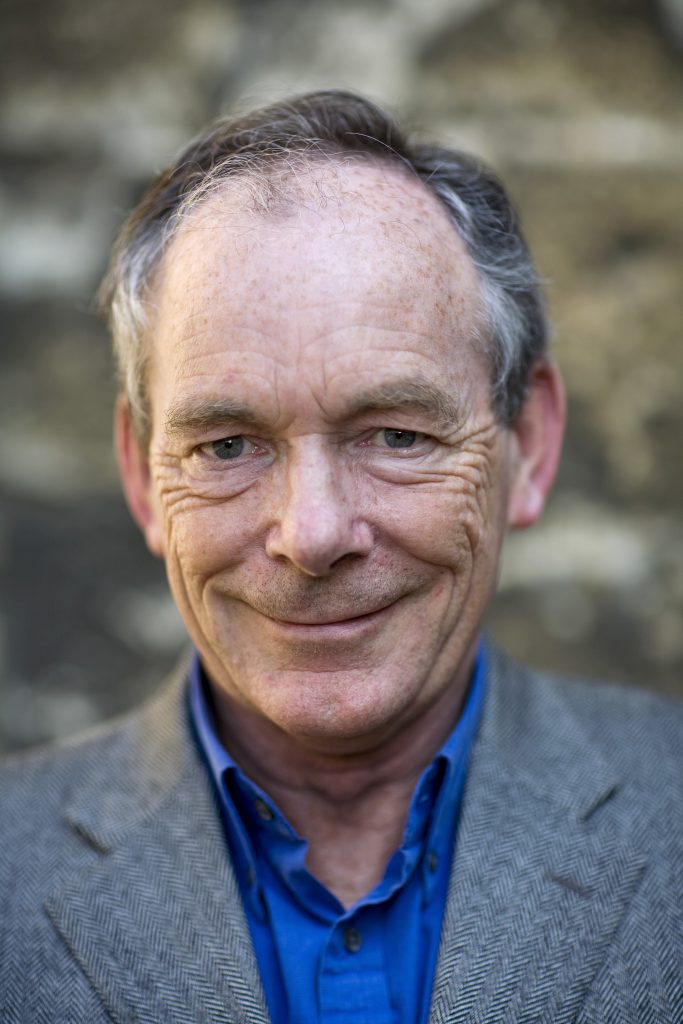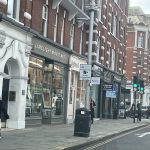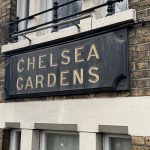Sir Simon Jenkins, 82, is an author, journalist and broadcaster, whose stellar career has spanned more than 60 years. He was Editor of the Evening Standard from 1976-78. After seven years as political editor of the Economist, he was Editor of The Times from 1990-92. He is a columnist for the Guardian and has written numerous bestselling history books, including A Short History of England, A Short History of Europe and Britain’s 100 Best Railways Stations.
Jenkins will present a lecture at the Chelsea History Festival entitled ‘A History of British Architecture: Who is to blame?’. He will reveal the hidden narratives behind the facades of some of Britain’s most ionic buildings and promises to “demystify the language of architecture”.
What, if any, is your connection with Chelsea and your understanding of it?
I have visited Chelsea very often over many years. I regard Chelsea and Hampstead as the two definitive, village-like places left in the capital – and I wouldn’t dream of choosing between them! I lived in Hampstead for a while, but never Chelsea.
I think Chelsea is a superb survival of what London used to be like long ago. It has managed to survive very well and remarkably untouched by the 20th century. The only sadness about Chelsea now is depopulation. It’s a place that is half empty most of the time. When I go for walks in Chelsea, I just feel I’m walking down empty streets. Apart from the King’s Road and around Chelsea Green it feels that there’s no actual life. I don’t know what can be done about it, but I think it’s a real problem for London at the moment. I live in a part of Kensington which is almost as deserted.
How do you explain the ’de-population’?
It’s full of second-homes – it’s as simple as that. Foreign buyers have bought up property and they don’t live in them all the time. Where I live, we’re surrounded by people who come occasionally, but don’t live here. Sadly, that’s in the character of attractive, prosperous parts of most cities.

What should be done to stop neighbourhoods like Chelsea and Kensington from being hollowed out?
Whether you can ban it, I really don’t know. I don’t think you can. I’d love to know if anyone has an idea what you might do. I worry about it a lot – not least because I am a second-home owner, too [Jenkins, who’s father was Welsh, has a house in the village in mid-Wales where he was brought up]. It’s a sign of being reasonably well off that you can afford to have two houses. For the residents of both the places where you may have homes, it is sad that their streets are empty most of the time. It’s a conundrum and a problem. Airbnb is having a lot to do with it.
What would you do?
In Wales, we now pay two-and-a-half times council tax on the house. It is astronomically expensive to keep, but I regard it as worth it because we love living there. But I’m acutely aware of the fact that the other people in the fishing village where we live, do not like the fact that our quite substantial property in the middle of the village is empty most of the year. I get my family to use it a lot, but it is still empty much of the time. The village is being taken over by Airbnb.
Do you feel bad about having a second home in that village?
I don’t feel bad because I have been there all my life and my parents are buried there. I mean, we’re very much a part of the village. We’ve always lived in that area.
Where do you head to in Chelsea?
We often go down to the market at Duke of York Square. I’ve always liked the King’s Road. It’s a very lively place. The place still has a certain amount of vitality to it, more so theses days. Chelsea is a very interesting place because it goes from Sloane Square, where you really feel you’re in central London, down to World’s End, where you feel you’re in a sort of suburbia. Chelsea has the finest stretch of river in London along Cheyne Walk. And I like the area around Chelsea Green, which is still a bit of a village.
How long have you been in Kensington?
I’ve have lived here twice, since the 1960s. I lived just off Kensington High Street when I came out for university. A big gang of us were in a rented flat in Abingdon Road. I have lived in all different parts of London ever since, but I have never actually lived in Chelsea. I moved back to Kensington in 2008 to a house not far from the High Street.
Do you see a comparison with Chelsea was Kensington?
They have always been two very distinct areas. When they were merged in 1964 or 65, there was some resentment in Kensington that it was being associated with this rather roughish, student, artistic place called Chelsea. I think the tables are slightly turned now. I think Kensington now is as much more associated with North Kensington, whereas Chelsea has got more and more expensive and more cosmopolitan.
Do you ever see yourself living in Chelsea, or are you a Kensington lad through and through?
I think I’m a Londoner. I’ve always lived somewhere in London. I’ve always regarded walking down King’s Road as an important part of being a Londoner. I always preferred it to Carnaby Street, which is more downmarket. The survival of Chelsea is really quite remarkable. The subtle differences between, for example, the King’s Road, Fulham Road, and Old Brompton Road, are remarkable. Only the peopele that live there really understand the nuances of village life.
What is your earliest memory of coming to Chelsea?
It was in the 60s. There was a club called The Pheasantry. Is that still there?
Yes. It’s actually a Pizza Express now…
Oh God! There we are. Certainly, I can remember in my youth going to the Pheasantry Club, which was quite exciting. I was 18, 19, or 20. I also used to go to the Royal Court theatre quite a lot. The Royal Court really was a very important theatre in those times. It was the radical theatre and was one of the reasons for Chelsea’s slightly raffish, artistic appeal. I think Chelsea’s now become certainly more prim and posh.
I ran a campaign to stop a huge tower of apartments from being built by Battersea Bridge and you wrote a great article in support of it – Thank you! What do you think of the appetite for building these luxury towers?
I just find towers in London completely out of kilter with the city. They are all monsters, but the battle has been lost and I find it completely tragic. You cannot look out of Primrose Hill over London and not see these dotted towers here and there, serving no purpose at all, except to make some money. They’ve been allowed to go up anywhere. I think it’s just a tragedy, there’s no question about it. But all power to your arm for stopping that tower in Battersea.
What can we expect from your lecture at the History Festival?
It is an illustrated lecture of changes in style in British buildings over the centuries. The bones of it are about what happened since the Second World War, when modernism came into British style and what it did to Britain – and how modernism got so many things wrong. I will refer directly to the scale of the disaster with the building of giant estates during the postwar years across the poorer parts of London, from which we have never recovered. I will also refer to tower blocks and how they have been built wherever a developer wanted one. This has not been repeated in any other city in the world and it has been a disaster.
One last question – You have to move to Chelsea or Kensington, which will it be?
I think Chelsea is a nicer place. Chelsea’s got class. I mean, I love Kensington, I’m very happy living there, but I regard Chelsea – along with Hampstead – as one of the loveliest places in London. I hear that a nice house in Old Church Street has just been sold…
Actually, it’s called The Old Rectory and it’s still on the market. You could probably get for about £250 million…
Fine. I’ll take that one!
Simon Jenkins will be appearing at the National Army Museum for the Chelsea History Festival on Sunday, 28th September, 6.30-7.30pm. Tickets – £15. To book, visit here


